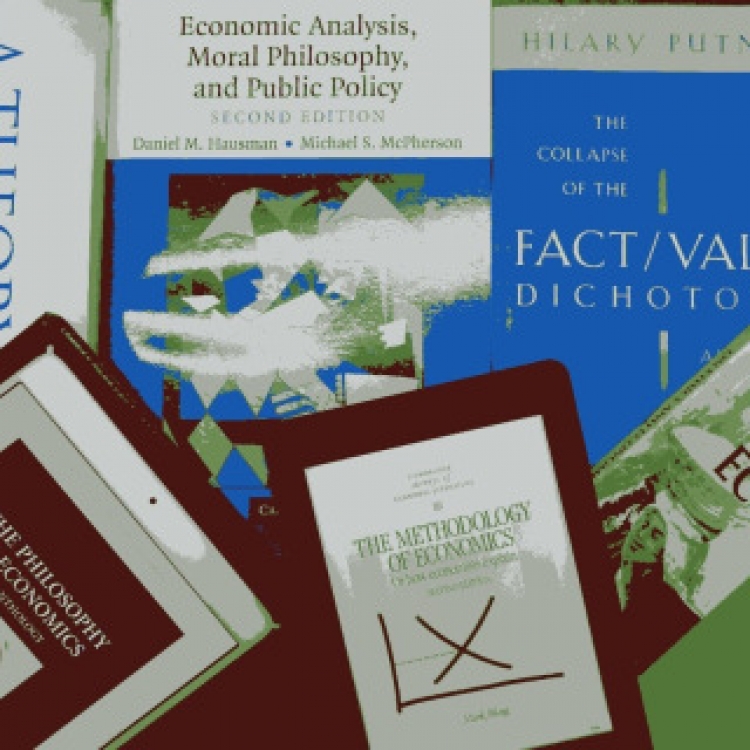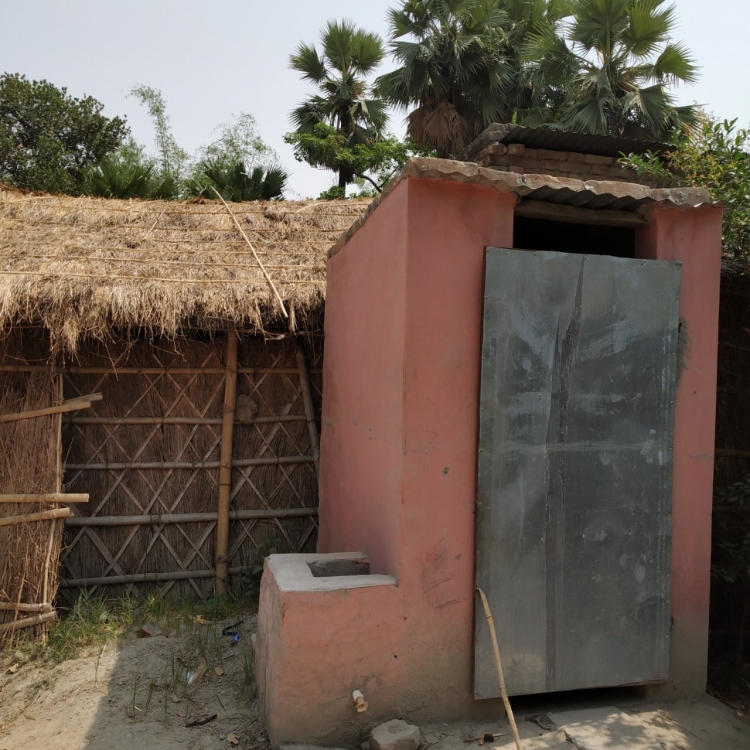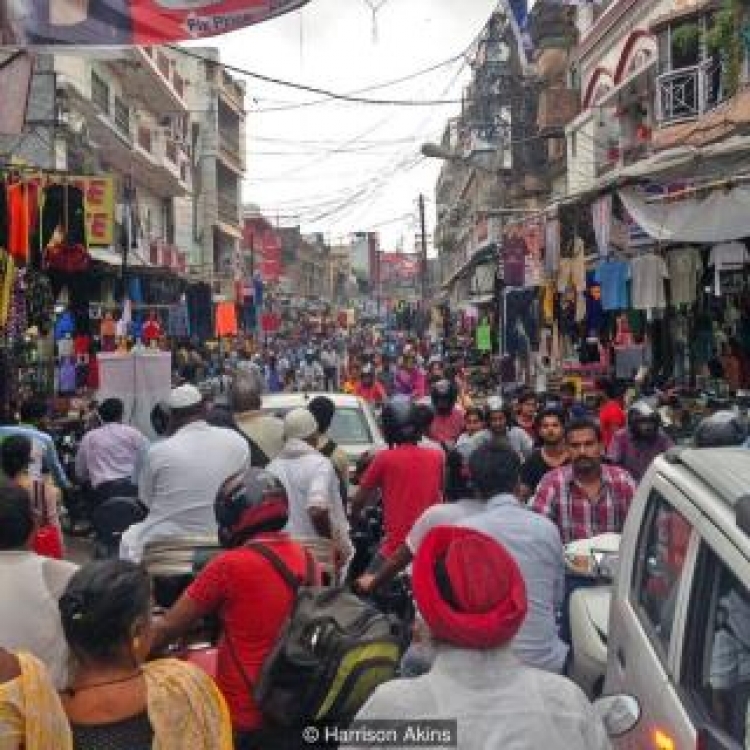
Nation, Identity and Democracy in South Asia
21 Oct 2017 0 comment(s) Opinion Pieces
(This essay was first published on wordpress blog-site on 21 October 2017)
I. Introduction
Identity and History: these two words carry very deep meanings and are also intertwined in various complex ways in more senses than one. In modern times, when, as Peter Watson says "the present world has become an end in itself instead of a preparation for a world to come"(Watson, 2006), instead of mulling over various social-economic and development challenges and trying to find their answers, when I find a tendency to side step them for debating and even fighting over what I call non-issues, it is just one pointer of the importance of identity defined, redefined and then ill-defined in relation to history, which is then often used for parochial and divisive purposes.
This essay is an attempts to point out certain features and ideas from shared history of this sub-continent, now called South Asia, and specifically juxtapose two successor ‘nations’ of British imperial empire - India and Pakistan. I will not enter into the issues relating to understanding of terms like 'nation', ‘nation-state’, and 'state', as understood in political science and theory; presumably India may not be strictly understood as a 'nation', but it is a 'state' nevertheless, and therefore, not actually a 'nation-state'. Through this juxtaposition, I will highlight various salient features of the issue of identity and nationalism which we often tend to forget, sometimes even tend to ignore. My attempt is to put forward a deep and subtle understanding of ‘India’ – as a society, as a civilization, as a culture, and in our times, as a democratic, liberal, diverse country. This has been attempted by contrasting the experience of India with that of Pakistan since their independence in 1947 from colonial rule, and how nation and society were theorized, imagined, justified and how the whole discourse and dialectic of social-political and cultural identity and resulting processes and consequences have taken place in these two countries since then.
Let me recollect that some of these ideas and issues were examined, discussed and debated in student’s forum and informal groups at Harvard University, where there was a very lively and active body of south Asian students. I also recollect how Indians and Pakistanis often were good friends in an alien land, obviously due to natural reasons of shared and similar history, culture, food habits, languages and what not. And let me also point out how many Indians used to squirm when Pakistanis were given equal (sometimes more) ear/hearing during various discussions/debates, and also how increasingly Indians were trying to project themselves much better than their Pakistani counterparts, and not at all happy with the ‘hyphenation’. For me, it was (and still is, for those who are in USA, or other western countries) an interesting love-hate relationship to observe, experience and enjoy.
In light of Daniel Hausman reminding us that “being dogmatic is not believing that one is right, it is believing that one could not be wrong” (Hausman, 2017), I hope this analysis will help us being less dogmatic and be ready to listen, be open to various perspective, many of which may not be in conformity with ours, and being tolerant of other’s world view, in sum being more accommodating to diversity and heterogeneity. And I feel for we Indians, these issues have become much more important now than in any recent period of history. What is more, full length books can be written (and indeed, have been written) on each of issues/ideas raised and discussed in the following paragraphs. Nevertheless, what follows in the rest of this essay is my take, my observation, analysis and interpretation on this important issue, and I think it is very important to express it.
Since the whole analysis will be too long for a single essay, I will be covering them in two separate essays. This, being the first one, will focus more on issues of nation, political process, state formation and democratic institutionalization. Ideas of identity and history, historical interpretation and understating will mainly be discussed in second essay.
II. Democratic ‘Divergence’ in south Asia
The idea of ‘divergence’ as a historical fact and something which could be very helpful in identifying and analyzing long term historical processes was popularized by Kenneth Pomeranz through his most famous book: The Great Divergence, published in 2000, wherein he propagated the argument of how China started to lag behind newly industrializing Europe during 17th-18th century, leading to the greatest divergence in human civilization resulting into today’s unequal economic worlds of east and west (Pomeranz, 2000). Taking Pomeranz idea, I intend to apply it, though on a much shorter scale of space and also time, to India and Pakistan.
Indian and Pakistan are like twin brothers. They are so similar, yet so different - the most striking difference being in the form of government - India has remained democratic since its birth, whereas Pakistan has been a dictatorship almost throughout. There were around two years of 'emergency' rule in India during 1975-77 - though it was not a military dictatorship, and Pakistan has also seen small interludes of democratic experiment, though all of them eventually failed. However, the experience of recent past has some hope for the future, though it may be too early to conclude anything. The first general election in independent India was held in 1952 and was termed by many as 'biggest gamble in history (Guha, 2007a). Even before that election, it was said that a poor, uneducated, diverse and divided country cannot aspire to become a democracy. For that matter, the very fact that India was a single country was inconsistent and incongruent to the received wisdom of western political scientists. It was, sooner or later, destined to disintegrate into many different nations - like Europe. Pakistan, on the other hand, appeared to be confirming to the received wisdom - a poor, undeveloped, diverse, uneducated country in Asia cannot be a successful democracy!
Yet, India has remained a single country - and the democracy has taken deeper and deeper roots. Understanding Indian subcontinent deeply has always been difficult for a western mind as nothing is obviously true for India as a whole. Every generalization that follows could be disproved with evidence to the contrary from India itself (Wolpert, 2009). And the democratic divergence of India and Pakistan has only added to this difficulty and puzzle. I would, in the following paragraphs, be trying to analyze the causes of failure of democracy in Pakistan and in the process would go beyond the popular and often naive explanations offered from various sides. History and its understanding, certainly, would come to play a crucial role here along with how it shapes and reshapes individual and collective identity in the society at large, and often transforms a motley group of people to an "imagined community" (to borrow the word of Benedict Anderson from his 1983 book of the same name, which beautifully analyzes the causes of rise of modern nationalism in various parts of Europe). It will also be helpful, I hope, in demonstrating to all of us Indians, why we need to be very perceptive, careful and vigilant in preserving our liberal, tolerant and argumentative historical-cultural heritage, which often is easier to destroy then generally perceived.
III. Two Rival Ideas of Nation: Composite Culture vs. Religious Homeland
Why democracy has been successful in India and not in Pakistan despite both countries having almost same social, cultural, political, historical and geographic background? It's a hotly debated topic - a large number of explanations have been proposed and analyzed like the basic flaw in the idea of a separate nation for Indian Muslims, the nature of pre-independence political formations and its effect, the way freedom movement was spearheaded during 1930s and 1940s, maturity and vision or lack thereof of political leadership, role and reactions of Congress and Muslim League - the two main political parties, the role, power and position of feudal elements in the society and the approach of British government during the last couple of years etc. Most of these do contain some valid explanations. Further, since independence, the way political leadership and society as a whole has handled the democratic experience in newly independent nations of India and Pakistan has also influenced the deepening or otherwise of the democratic experience. Nevertheless, it needs to be emphasized that the seed of democratic divergence were sown with the different ‘idea’ on which India and Pakistan were formed. In this seeding, how history was (and is) understood, interpreted and propagated to influence millions played a very important role.
The ‘two nation theory', which refer to the claim that Muslims of India need a separate nation of their own, and the induced developments are perhaps the pivotal cause for failure of democracy in Pakistan. The idea of Pakistan was propounded, quite late during Indian freedom struggle, as a homeland for Indian Muslims - where they would be living in peace and prosperity, on the presumption that a peaceful coexistence was not possible in undivided India with Hindu majority. Though at first, the idea appears to be having merit and may have parallels in world, on deeper examination, it becomes clear that demand for a separate nation on the basis of religion in Indian subcontinent was (and is) absurd. For centuries, people of Indian subcontinents have shared a culture and history where religious tolerance and assimilation was the dominant force in social, political and economic sphere. The society and culture of Indian subcontinent has evolved through an intermingling of people of different faiths, ethnicity, beliefs, language, practices and what not. The leaders of Congress party were able to realize this early on and were advocating a pluralistic society with a democratic polity in a free India. They envisaged India as a multi-cultural, multi ethnic and multi lingual democratic country where people of all faith and beliefs would be living in peace and harmony - the 'secular' state would have equal ‘respect’ for all faiths and beliefs (Jayal, 2010). Though it may appear strange and even unbelievable to many, India has always been so - for much of its history (Tharoor, 1998). Just to give one example - as early as 300 BC, we have ample evidence in Asoka’s rock and pillar inscriptions which inform us that state as well as society was respectful and tolerant of people of all beliefs and faiths (Sen, 2005).
The advocates of Pakistan also realized this (most of the Muslim League leaders, including M A Jinnah, started their political career in Congress, and were part of this umbrella organization as late as 1930s), but subsequently, on being alienated from Congress and facing some sort of existential issue, pressed for an independent nation for Indian Muslims. It is also claimed that Jinnah was peeved with Mohandas Gandhi's non-violent approach and his subsequent emergence as the undisputed national mass-leader, as well as growing importance of younger Jawaharlal Nehru - most of which appears to be true. They were able to influence many (but not majority) Muslims, especially in northern and eastern parts of India, with their political-religious-communal slogan intensely propagated during those turbulent two decades (1930-40s) due to various complex factors and ultimately were able to snatch the independent nation of Pakistan (though much smaller than it was initially dreamed of). The divisive and hasty approach of British is also to be blamed (Wolpert, 2006). However, without further going into much commented history of India's partition, it is important to note that the movement for Pakistan was not a positive one at the core. It was based only on anti-India (or anti-Hindu, as Muslim league would have liked to call it) agenda vigorously pursued by a new political formation started solely for this purpose which did not have much organizational and institutional capacity. There was perhaps scarcely any vision for nation building, democratic institutions, social reorganization and reform, power and resource sharing, development, conflict resolution and similar other program in the Muslim league or Pakistani leadership – as it was centered only on getting a separate nation for Muslims of Indian sub-continent. As the foundation of a nation was laid on the basis of divisive religious argument, it became quite difficult to come out of this limited vision - in a sense Pakistan's vision was frozen in time. Even today, Pakistan, more often than not, identifies itself in relation to India.
Further, the pre-independent support base of Muslim League was largely in north India (present day province of Uttar Pradesh of India) and this area remained with India (and most of the Muslims of these areas chose to stay in India) (Stern, 2001). In pre-partition days, Muslim League has virtually no presence in Punjab till 1940s and, post-independence Muslim League in (West) Pakistan came to be dominated by a microscopic minority of feudal and rich Muslims and Military, mostly dominated by Punjabis of north-west Indian province, who were more concerned with preserving their power and control over resources. Such tendency was helped by early demise of Jinnah who nevertheless had democratic and modernist instinct. The leadership eventually came to be dominated by a mix of top military officers, rich landlords, rich businessmen, upper classes and like. This coalition of dominant classes has always been (and still is) in opposition to democracy and religion has been a handy and potent weapon in their hands to perpetuate and promote traditional forces. Over time, they appear to have been quite successful in spreading India focused existential idea of Pakistan even among middle classes, to keep the attention away from other much more pressing social, political and economic issues. (Do I sound familiar here, with what is happening in our country now!!) Non-democratic military government got further entrenched with continued support from western powers, first during the cold war and then in the name of fighting terrorism since late 1990s.
IV. Nation and State Formation: Religion and Other Identities
How can ‘two nation theory’ explain the presence of large number of Muslims in India – who chose not to migrate to Pakistan at the time of partition? India today has world third largest Muslim population (around 160 million)- almost equal to population of Pakistan, being the largest Muslim minority in any country of the World (13% of India's population). As many as three Presidents of India has been Muslims, some of the most popular movie and sports stars have been and are Muslims, and World's richest Muslim entrepreneur is from India - just to give some examples. And such examples abound. On the other hand, Pakistan’s leadership failed to make a transition to democratic ideas mainly because of its ideological moorings which also explain why Kashmir is still the central issue for Pakistan’s government. By implication, let me be clear here: I am also saying that Kashmir should not be a central or the most important issues for us Indians, despite being one of the thorny issues from the times of discussion on independence and treatment of princely states (Tunzelmann, 2007) till date. There are many more and much more important challenges for us to tackle, in our own country.
Looking at the Indian side at the time of independence, political leadership in India (Gandhi, Nehru, Ambedkar, Patel, Azad and many others) was fully aware of the challenges and responsibilities of a nation building program. They were much more careful and determined after the bitter experience of partition - to make India a truly secular and democratic nation. India would not become a 'Hindu Pakistan'. Rabindranath Tagore, as early as in 1917, has realized and emphasized that the issue facing India is not political but social, as since the earliest beginning of history, India has her own problem of ‘race’- the term which he further explained as diversity and differences among people of India (Tagore, 1917) . Thus, while India framed and implemented its democratic federal constitution within 3 years of independence, Pakistan could not do this even after ten years and by the eleventh year, it was under military rule. What India achieved in first fifteen years looks incredible - integration of more than five hundred principalities into India, reorganization of states on linguistic lines, social reforms, an industrialization program, land reforms (though not that successful, especially in north India) and of course, regular elections with universal adult suffrage - these were vital for strengthening of democracy (Guha, 2007b).
Nothing is more telling proof of the absurdity of 'the idea of a separate nation for Indian Muslims' than the separation of East Pakistan as new nation of Bangladesh in 1971 (for those who are not aware - Pakistan was born as a nation with two halves, separated geographically by a distance of 2000 km - and these were called East and West Pakistan - as it was carved out by taking Muslim majority districts of India - in the process dividing two lingo-cultural provinces of Punjab and Bengal). Pakistan lost more than half of its people with the birth of Bangladesh. Despite being Muslim, why did East Pakistan secede? Weren’t Muslims of India supposed to be forming a unified nation? Since the beginning, people of West Pakistan dominated Pakistan polity, society and military and controlled resources. East Pakistan was treated as almost a colony - was denied political power and equitable share in state's resources. Urdu/Punjabi was thrust upon them who spoke Bengali. East Pakistan (inhabited by Bengalis) was linguistically and ethnically different from West Pakistan and these differences were much more substantial than commonality of religion. This led to growing discontent, protests and eventually state repression and civil war situation in 1970 when (east) Pakistan's Mujibur Rehman led Awami League won majority seats in national elections and he appeared set to become Pakistan's President - much to the discomfiture of (West) Pakistant's elites. He was arrested, army started repressing the popular uprising in East Pakistan which fueled huge migration of refugees to India and then India intervened militarily, leading to an Indo-Pakistan war in 1971. This all ultimately led to the birth of East Pakistan as independent nation of Bangladesh with the defeat of Pakistani forces. I do not want to enter here in to the geopolitical power play of India and its political leadership at that time. That, though being a fact (Bass, 2013), is besides the point.
Pakistan was created on the basis of religion but was divided on the basis of language! Here again, the contrast with India is telling – India - with as many as 18 major regions with their own languages (and scripts), social and cultural identities, and tremendous diversity of every conceivable form - is in a sense 'nation of nations' - and also has strong divisive tendencies. The key answer here lies again in the way these issues have been tackled in India – for example the sub-national identities of language were effectively resolved by formation of linguistic provinces in 1950s. The role of democratic ideals based on consultation, reconciliation and respect for other’s point of view again come in focus here – Nehru, who dominated the Indian polity till his death in 1964, was averse to the idea of linguistic states – but ultimately agreed to it in a truly democratic and non-dogmatic fashion.
Let me close this essay here. In the next one, continuing the discussion, I will be examining the idea of identity in relation to history, religious and other ethnic-cultural paradigms, and how these impinge upon the current political and social discourse.
References
- Bass Gary (2013): The Blood Telegram- India’s Secret War in East Pakistan; Vintage Penguin Random House, New York, is an interesting and insightful history of the geopolitics in south Asia, and also of the role played by Nixon and Kissinger.
- Guha Ramchandra (2007a): India After Gandhi- The History of the World's Largest Democracy; Harper Perennial, New York, p770-775
- Guha Ramchandra (2007b): India After Gandhi- The History of World's Largest Democracy; Harper Perennial, New York, Ch 6,7,8,9
- Hausman Daniel, Michael McPherson, Debra Satz (2017): Economic Analysis, Moral Philosophy, and Public Policy; Cambridge University Press, New York, p11
- Jayal Niraja Gopal, Pratap Bhanu Mehta ed (2010): The Oxford Companion to Politics in India; Oxford University Press, New Delhi, p335-336
- Pomeranz Kenneth (2000): The Great Divergence; Princeton University Press, USA, 2000
- Sen Amartya (2005): Argumentative Indian - Writings on Indian History, Culture and Identity; Picador, USA, 2005, p18, 46, 285-86
- Stern Robert (2001): Democracy and Dictatorship in South Asia - Dominant Classes and Political Outcomes in India, Pakistan and Bangaladesh; Praeger, Westport, 2001, p14
- Tagore Rabindranath (1917): Nationalism; Penguin Random House, New Delhi, (1917, 2009) p64-65
- Tharoor Shashi (1998): India - From Midnight to The Millennium; Harper Perennial, USA,1998, Ch. 5
- Tunzelmann Alex Von (2007): Indian Summer-The Secret History of the End of Empire; Simon and Schuster UK Ltd, London, ch 247-248, 283-284
- Watson Peter (2006): Ideas: From Fire to Freud; Harper Perennial, New York, p398
- Wolpart Stanley (2006): Shameful Flight - The Last Years of British Empire in India; Oxford University Press, USA, Ch. 1
- Wolpert Stanley (2009): India, 4th edition; University of California Press, Berkley, USA, p1
(Word Count: Approx 3500)






Comments
0 comment(s)